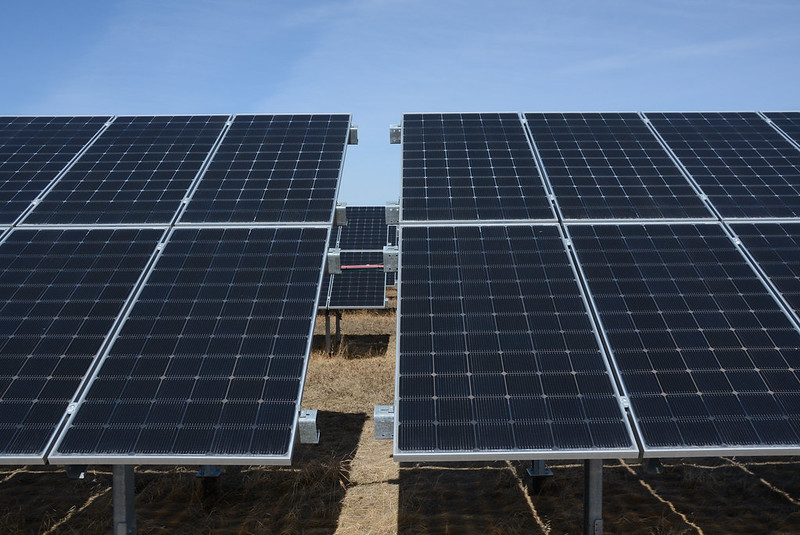In 2022, for the first time in history, global investment in clean energy caught up to investment in fossil fuels. How much investment? US$1.1-trillion — in one year. To remain a prosperous country while also meeting its climate change commitments, Canada needs to attract a larger slice of that pie, which will only grow in the decades ahead. How are we going to do that?
We won’t get there with a sudden and unexpected moratorium, like the one Alberta just announced. Halting renewable energy development there risks leaving more than $25-billion in private investment dollars – just for Alberta – on the table. That is a significant step backward.
What we need, now more than ever, is incentives and regulations together — the push and pull of effective energy policy — to ensure Canada gets its share of the trillion-dollar global investment in clean energy. The push of incentives supports clean energy project economics. The regulatory pull creates market demand for those projects. Working in tandem, the two attract private sector investment.
We don’t have to look far to find an example of effective public leadership. The U.S. government has created effective incentives for scaling up clean energy. The country is already reaping the benefits, triggering a surge in domestic manufacturing. As Nobel Prize-winning economist Paul Krugman wrote in The New York Timesin June, “there’s no real question about the causes of the surge. It’s being driven by … [the] Inflation Reduction Act, whose actual core is subsidies for green energy.”
There’s a lot packed into the IRA: modernizing the electricity grid, building a nationwide network of electric vehicle chargers, strengthening the battery supply chain, expanding public transit and passenger rail, investing in new clean energy and emissions reduction technologies, and more. The lesson for Canada — a country with enormous untapped potential in clean energy — couldn’t be clearer. The investments that a clean grid attracts also deliver economic growth benefits.
Canada is making progress on this front, offering several clean energy funding opportunities. Natural Resources Canada’s Smart Renewables and Electrification Pathways program made more than $1.5-billion available for smart renewable energy and electrical grid modernization projects. The Canada Infrastructure Bank provides financing for zero-emission vehicle charging and energy efficiency retrofits. And there is the 30 per cent tax credit for solar, wind and energy storage projects deployed through March, 2034.
Incentives, however, are only one side of the coin. Canada can advance further in attracting investment capital by creating predictable demand for clean energy through establishing clear, meaningful and well-designed rules. The clean electricity regulations that the federal government is currently designing can provide the certainty that investors and renewable energy buyers need to continue investing in Canada.
With this regulatory pull, Canada can maximize the private investment that is leveraged by the public funding Ottawa is now providing. We cannot outspend the largest economy in the world, but with a regulation-backed investment environment, Canada can gain a competitive advantage as a host for new clean energy.
Ottawa’s new clean electricity regulations must ensure that any electricity emissions in 2035 and beyond are addressed with credible, verifiable, additional and permanent carbon offsets, in order to achieve a truly net-zero grid by 2035. They must set out interim targets to foster investor certainty.
The overall framework must also be credible to everyone, including investors, ordinary Canadians, Indigenous urban and remote communities, companies with environment, social and governance goals, civil society leaders and the international community. To that end, regulations should provide a pathway for all jurisdictions in Canada to become net zero in ways that support their unique needs.
The early signs are promising that Canada can — and will — lead the way, but only if all provinces embrace sensible rules and incentives to promote the growth of renewables, which are currently the cheapest form of electricity available.
Prior to announcing a moratorium on clean energy development earlier this month, Alberta had a growing profile as the renewables capital of Canada, and it’s easy to see why. As the Calgary Herald reports, Microsoft Corp. signed on to purchase 543 gigawatt hours of energy a year from an Alberta wind power project last year. Meanwhile, Alberta’s Vulcan County is the site of Canada’s largest solar development, the Travers Solar project, which will provide 375 megawatts of electricity to Amazon.com Inc.
Experts expect billions of dollars more in similar clean energy deals over the coming years.
The size of the economic prize is impossible to pass up. The key to our future prosperity is to act concertedly with a suite of strategies to maximize Canada’s appeal as a clean energy investment locale. By implementing policies hand in hand with one another, to push and pull the clean energy investment vehicle, Canada can gain the advantage in securing these economic benefits.






